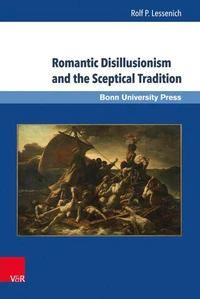Romanticism was not only heterogeneous and disunited. It also had to face the counter-movements of the Enlightenment and Augustan Neoclassicism, which were still gaining momentum in the decades around the French Revolution. Neoclassicists regarded Romanticism as a heretical amalgam of dissenting "new schools" threatening the monopoly of the Classical Tradition. Acrimonious debates in aesthetics and politics were conducted with the traditional strategies of the classical "ars disputandi" on both sides.
Under the duress of the heaviest satirical attacks, Romanticism began to gradually see itself as one movement, giving rise to the problematic opposition of "Classical" with "Romantic". This construction, however, was indispensable for the clarification of different positions among the hubbub of conflicting voices. It has also proved critical in literary and cultural studies. The Classical Tradition emerges as an ongoing event from Greek and Latin antiquity via Neoclassicism and Romanticism to our time.
Romanticism was not only heterogeneous and disunited. It also had to face the counter-movements of the Enlightenment and Augustan Neoclassicism, which were still gaining momentum in the decades around the French Revolution. Neoclassicists regarded Romanticism as a heretical amalgam of dissenting "new schools" threatening the monopoly of the Classical Tradition. Acrimonious debates in aesthetics and politics were conducted with the traditional strategies of the classical "ars disputandi" on both sides.
Under the duress of the heaviest satirical attacks, Romanticism began to gradually see itself as one movement, giving rise to the problematic opposition of "Classical" with "Romantic". This construction, however, was indispensable for the clarification of different positions among the hubbub of conflicting voices. It has also proved critical in literary and cultural studies. The Classical Tradition emerges as an ongoing event from Greek and Latin antiquity via Neoclassicism and Romanticism to our time.

 , qui est-ce ?
, qui est-ce ?